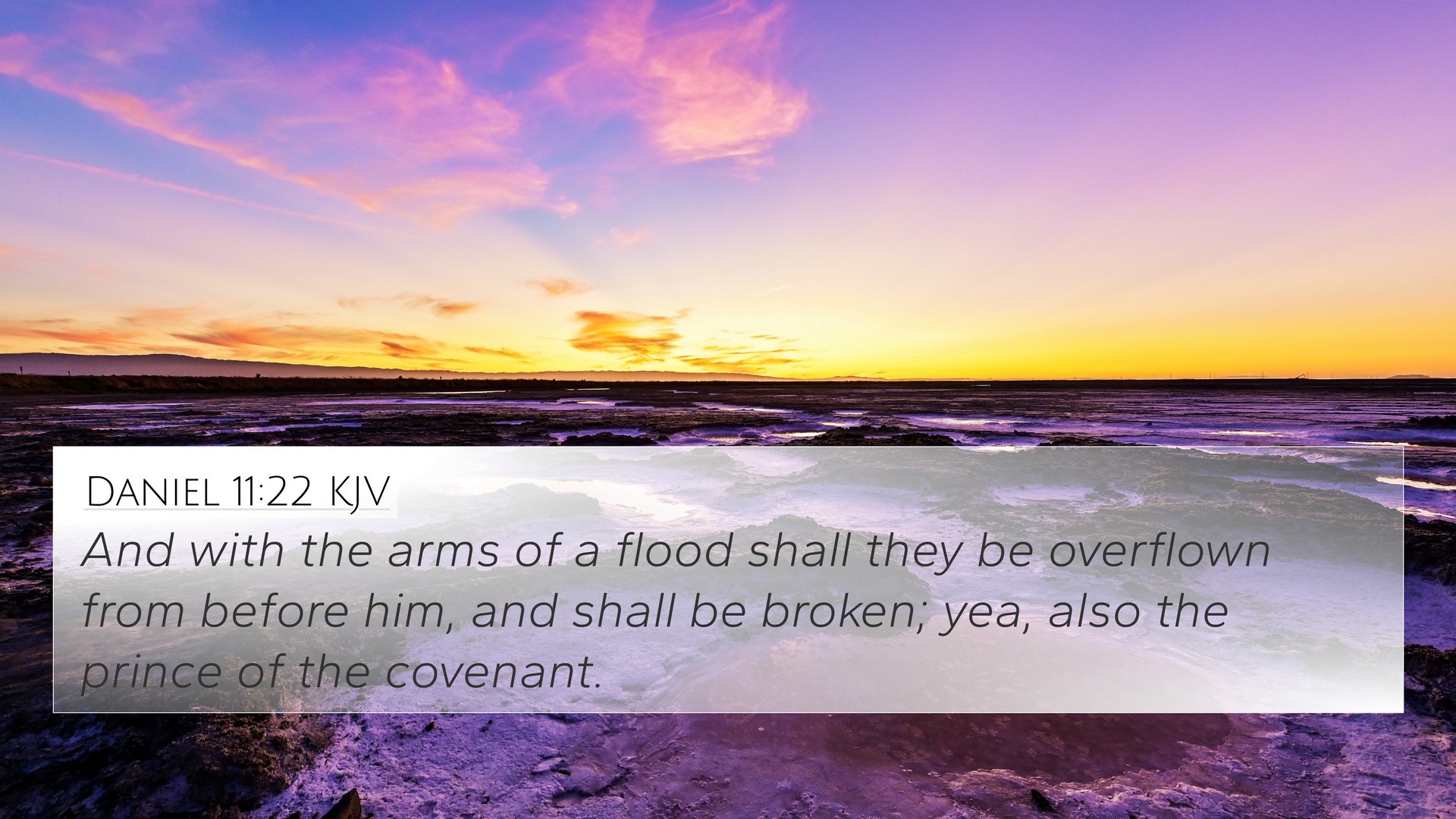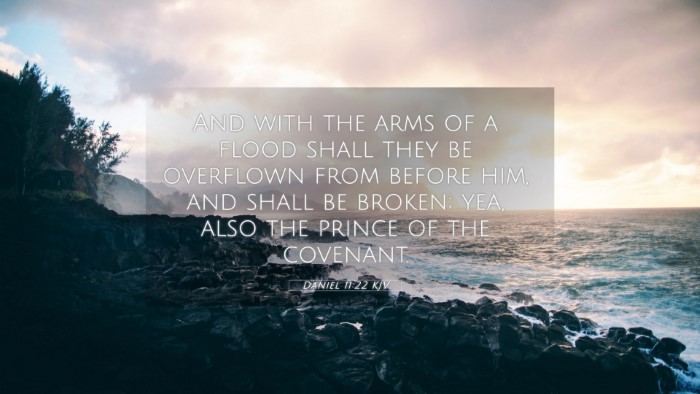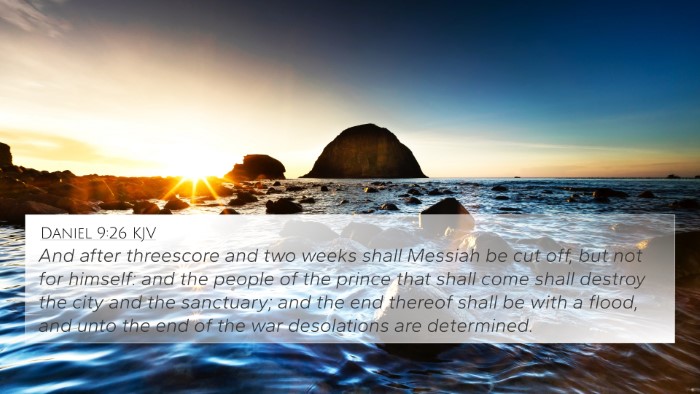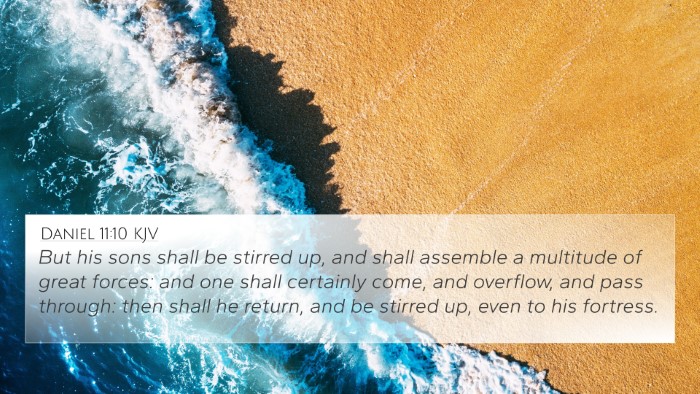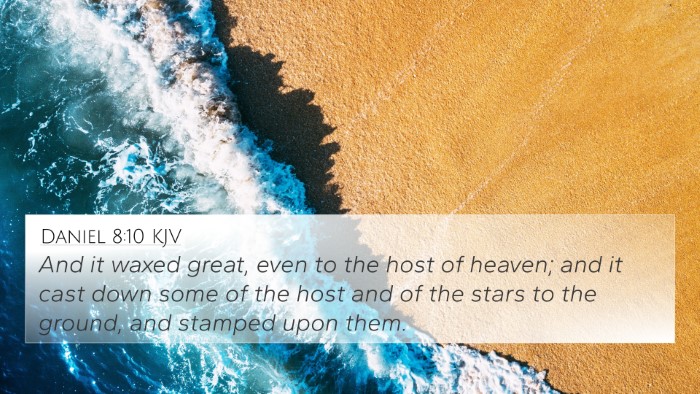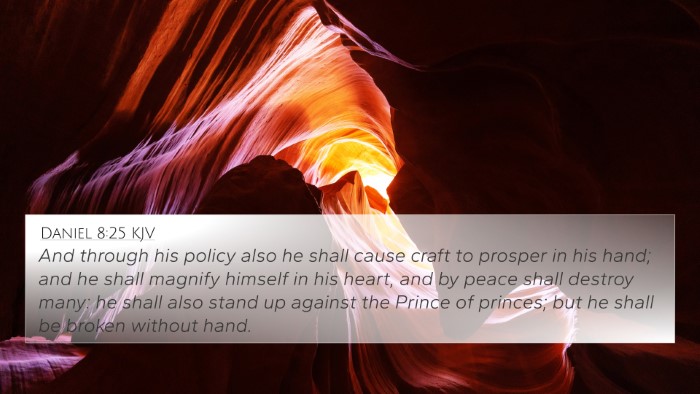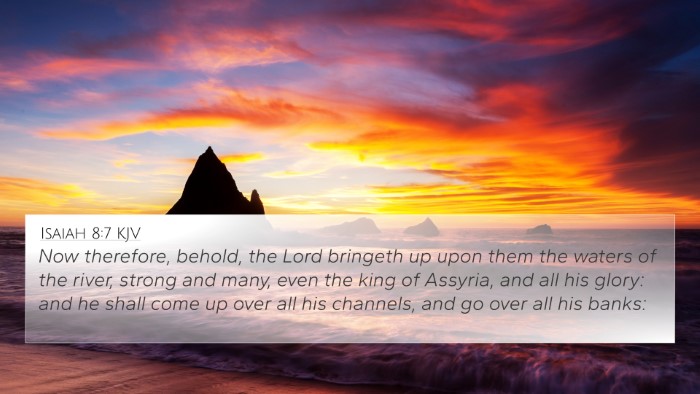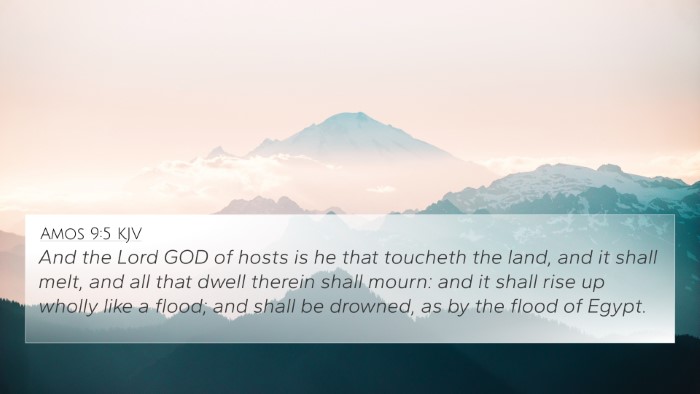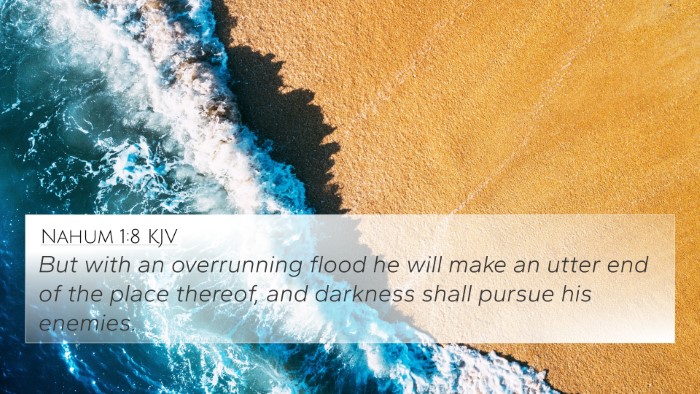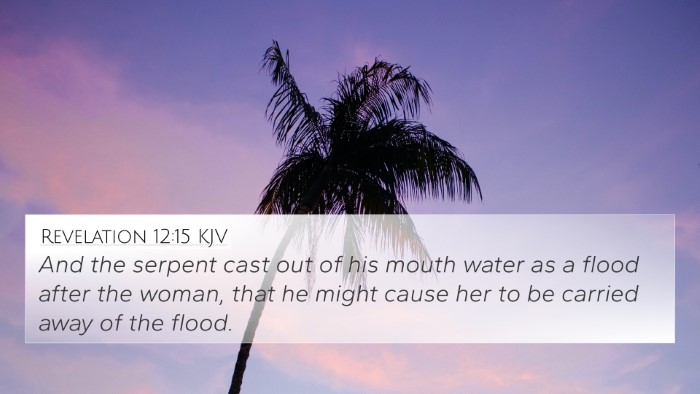Understanding Daniel 11:22
Daniel 11:22 states: "And with the arms of a flood shall they be overflown from before him, and shall be broken; yea, also the prince of the covenant."
This verse is rich in symbolism and prophecy, depicting events related to power struggles and deceit in a turbulent historical context. Below is a summarized interpretation combining insights from public domain commentaries by Matthew Henry, Albert Barnes, and Adam Clarke.
Contextual Background
The Book of Daniel, recognized for its prophetic and apocalyptic literature, sets the stage for this verse amid a vision regarding future kings and their conflicts. The chapter describes the rise and fall of kingdoms, focusing on the conflict during the intertestamental period, often associated with the Seleucid and Ptolemaic empires.
Breakdown of the Verse
-
“With the arms of a flood shall they be overflown”: This imagery of a flood signifies overwhelming force and sudden destruction. The 'arms' represent military power exerting force upon its adversaries. Albert Barnes explains that this depicts a swift and overwhelming attack on the enemy.
-
“Shall be broken”: This phrase denotes the ultimate defeat of the enemies of God's people. Matthew Henry emphasizes that the downfall is a result of divine judgment on those who oppose God’s covenant.
-
“The prince of the covenant”: This referred to a leader who is significant in upholding the covenant that God established with His people. Adam Clarke indicates that this likely alludes to the Messiah or significant leaders who guide Israel.
Thematic Bible Verse Connections
This verse not only stands alone in its prophetic utterance but also connects to several other passages that illustrate similar themes of conflict, divine intervention, and the intricate relationship between God and His covenant people.
Related Bible Verses
- Isaiah 54:17 - "No weapon that is formed against thee shall prosper" (divine protection for God's people).
- Hebrews 9:15 - "And for this cause he is the mediator of the new testament" (highlighting the importance of the covenant).
- Jeremiah 31:31 - "Behold, the days come, saith the LORD, that I will make a new covenant" (the prophetic announcement of the new covenant).
- Revelation 19:11-16 - "He that sat upon the horse is called Faithful and True" (the sovereign intervention of Christ).
- Ezekiel 34:22 - "Therefore will I save my flock" (God's promise of protection to His people).
- Psalm 2:1-6 - "Why do the heathen rage, and the people imagine a vain thing?" (the futility of rebellion against God's anointed).
- Luke 22:20 - "This cup is the new testament in my blood" (the establishment of the new covenant).
Insights from Public Domain Commentaries
The blend of insights from the three eminent commentators reveals a multi-faceted understanding of this verse:
-
Matthew Henry notes the comprehensive impact of divine retribution for offenses against His covenant. The imagery describes not just a physical battle but a spiritual confrontation.
-
Albert Barnes elaborates on the historical context, suggesting the prophecies of Daniel occasionally find their immediate fulfillment in historical figures and events that reflect patterns of the power struggles, shedding light on the historical struggle between the Seleucids and the Ptolemies.
-
Adam Clarke interprets the 'prince of the covenant' as Jesus Christ, linking it with New Testament revelations and understanding the fulfillment of God’s promises through Him.
Conclusion
Daniel 11:22 serves as a critical piece of biblical prophecy, illustrating the interplay of power, divine sovereignty, and the covenant relationship between God and His people. Through careful cross-referencing with relevant scriptures, this verse amplifies our understanding of God’s guidance throughout history and His ultimate plan for redemption.
